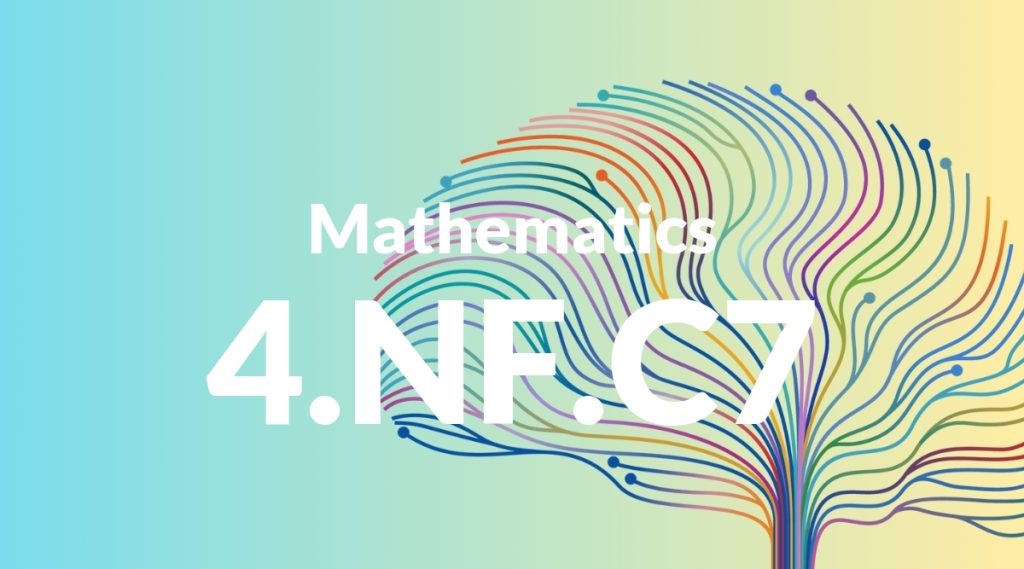Standard: 4.NF.C7 – Compare two decimals to hundredths by reasoning about their size. Recognize that comparisons are valid only when the two decimals refer to the same whole. Record the results of comparisons with the symbols >, =, or <, and justify the conclusions, e.g., by using a visual model.
Grade level: Grade 4
Subject: Mathematics
Domain: Numbers & Operations – Fractions
Teacher Overview
This standard focuses on comparing decimals to the hundredths place by reasoning about their size. It is important because it builds a foundation for understanding more complex decimal operations and applications in real-world contexts. Ensure students understand place value up to hundredths and are comfortable using comparison symbols. They should also be able to read and write decimals accurately.
After mastering this standard, students will be able to perform operations with decimals and apply their understanding in more complex mathematical problems and real-world situations.
Common Misconception 1
Students may incorrectly believe that a decimal with more digits is always larger, not considering the place value of the digits.
Intervention 1
Use visual aids like number lines and base-ten blocks to demonstrate that the value of a digit depends on its place value, not just the number of digits.
Common Misconception 2
Students may make comparisons without ensuring that the decimals refer to the same whole, leading to incorrect conclusions.
Intervention 2
Provide clear examples and non-examples to show that comparisons are only valid when the decimals refer to the same whole, and practice this concept with various exercises.
Prerequisite Knowledge
Students should understand place value, especially tenths and hundredths, and be able to read and write decimals up to the hundredths place. They should also be familiar with basic comparison symbols (> , =, <).
Subsequent Knowledge
Students will develop the ability to perform operations with decimals, including addition, subtraction, multiplication, and division. They will also learn to apply decimal comparisons in more complex mathematical problems and real-world scenarios.
Instructional Activities
- Use number lines to compare decimals visually.
- Create and interpret bar graphs with decimal data.
- Play decimal comparison games using cards or dice.
- Solve real-world problems involving money and measurements.




